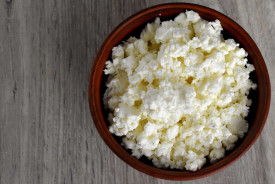Have you ever asked yourself, what is the difference between a filter and a strainer? Here we will take a look at each item individually and show how they stack up against one another.
 First, let's define each:
First, let's define each:
• A strainer removes large particle from liquid in the line to protect downstream processing equipment such as homogenizers, valves, pumps, etc.
• A filter separates solids from liquids in the line by passing the fluid through a media filter, which removes all particulates above a predetermined sizes, and allows the fluid and anything smaller to pass through.
 Based on these aforementioned descriptions, it may seem that a filter and a strainer perform the same duty; both separate particles from fluids.
Based on these aforementioned descriptions, it may seem that a filter and a strainer perform the same duty; both separate particles from fluids.
However, there is a key difference that distinctly sets apart these two products:
• Strainers are used to protect downstream equipment. They remove  larger foreign objects from the line before they get to the expensive equipment.
larger foreign objects from the line before they get to the expensive equipment.
• Filters are applied in order to separate particles from the fluid. The media filter grabs smaller unwanted particles to be removed and allows remaining fluid to carry onto the next step in the process.
Another minor difference can be related to resistance. Strainers normally present low resistance to flow. The pressure drop across most strainers is relatively small compared with the pressure drop across media filters.
Lastly, strainers are typically comprised of 316L stainless steel tubes, and are perforated. Filters also incorporate the tube, but require a media filter to be placed over the tube for removing the finer particles. Media filters are made of multiple materials and include polyester, cotton cheesecloth, and nylon, to name a few.
At Nelson-Jameson, we offer a wide variety of media filters, our Flow Stream Filter Tubes, as well as Retaining Rings to keep the media in place over the tube. If you would like to see our full line of sanitary filter media, click here to view our flyer.





